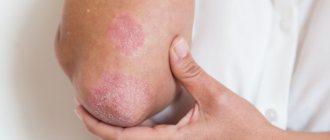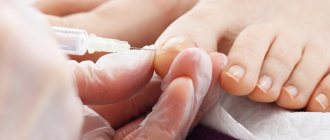In gynecology, vulvitis is an inflammation of the mucous membranes of a woman’s external genitalia.
The inflammatory process covers the labia, clitoris, external urethral opening, anal area and surrounding tissues (pubis, inner thighs, etc.). At first glance, such a pathology should bypass children of the younger age group and affect only adult women of reproductive age. However, statistics show that acute vulvitis in girls of childhood and adolescence is the most common reason for visiting a pediatric gynecologist. In some cases, doctors even diagnose vulvitis in newborn girls.
To notice and provide medical assistance in time for the development of vulvitis is the most important task of responsible parents . Advanced acute vulvitis in a child can involve the vaginal mucous membranes in the inflammatory process, which leads to aggravation of the little patient’s condition and provokes the development of vulvovaginitis. In addition, the acute process gradually turns into a chronic form, which inevitably affects the sexual, reproductive and menstrual function of an adult representative of the fair sex. This inflammation is dangerous due to the formation of synechiae (adhesions) of the labia minora, erosion of the cervix and uterine body, as well as the addition of cystitis and urethritis.
Treatment of diaper rash in newborns
Treatment of diaper rash that has already appeared involves the use of:
- External therapy with dexapanthenol, as well as benzalkonium, cetrimide.
- Lotions with various solutions (for example: tannin, silver nitrate).
- Zinc-containing preparations.
- Antibacterial ointments for tank infections.
- Antifungal ointments when fungal flora is attached.
Conclusion
Compliance with the basic rules of prevention and care, in most cases, helps prevent the development of skin ailments in infants. The remedies listed above serve as the drugs of choice in preventive measures aimed at preventing the appearance of diaper rash in the diaper area. The use of these remedies in the early stages allows you to quickly and effectively stop the rash and prevent the development of complications.
It is important to remember that no information can replace an in-person consultation with a pediatrician or dermatologist, so if a rash appears in a child, consult a specialist and do not self-medicate.
Causes of vulvitis in girls
The high incidence of inflammation of the mucous membranes of the genital organs in girls is associated primarily with the physiological characteristics of newborns and children of a younger age group. At birth, the reproductive tract and membranes of the genital organs are sterile. Only after a week, opportunistic microorganisms master this nutrient medium, forming a prototype of normal female microflora. However, unlike the genitals of an adult woman, the child’s vagina does not have a sufficient number of microorganisms, which explains the inferiority of the protective reaction. The fact is that it is the vaginal microflora that provides the acidic environment of the genital membranes. A high level of acidic components causes the death of dangerous pathogenic flora, effectively protecting a woman from infectious and viral pathogens.
Thus, initially the girl’s genitals are defenseless against aggressive bacterial factors. Only by adolescence, the pH environment of the mucous membranes transforms from neutral (pH 7.0) to moderately acidic (pH 4.0-4.5).
The second important provoking factor of childhood vulvitis in girls is the imperfection of the child’s immune system, namely the deficiency of immunoglobulins, phagocytes and components of the compliment system. It is important to monitor the state of the child’s immunity, because hypovitaminosis, taking antibacterial drugs and the presence of endocrine disorders in the girl, such as diabetes, are considered risk factors that increase the likelihood of developing inflammation.
The immediate cause of vulvitis in a child is infection. The following bacterial pathogens are considered the most dangerous in this regard:
- Nonspecific infections . This group of pathogens is also called opportunistic pathogens, since they normally live on the patient’s mucous membranes and are part of the healthy, complete microflora of the genital organs. This group includes all opportunistic aerobic and anaerobic flora and yeast fungi. To activate them, favorable conditions are necessary, in the form of weakened immunity. The situation is aggravated by failure to maintain personal hygiene, ignorance of the correct washing technique, wearing synthetic underwear, injury to the genitals, etc.
- Specific infections . This includes pathogens that are not normally present in the microflora of the vagina and external genitalia of a child - chlamydia, ureaplasma, gonorrhea, herpes virus, gonococci, mycobacterium tuberculosis, etc. Infection of children most often occurs through household means due to poor hygiene and the entry of strangers objects in the vagina (insects, toys, sand, etc.). In adolescents, infection can be caused by sexual relations and masturbation. Vulvitis in newborn girls can occur due to infection during contact with the contaminated birth canal of the mother.
- Fungal pathogens . Mycotic vulvitis develops as a response to the death of microflora in response to antibiotics and hypovitaminosis. This form of vulvitis in infants can be a consequence of diaper dermatitis.
- Helminthic infestations . Pinworms and other helminths usually affect children who have frequent contact with animals. This cause is often classified as a nonspecific form of pathology.
- Allergy . A rare form of the disease is atopic or allergic vulvitis, which manifests itself as a hypersensitivity reaction to an allergen. Both food products (citrus fruits, sweets, nuts, etc.) and local hygiene products (soap, balms contained in diapers, sanitary pads) can act as an irritant.
- Anatomical disorders of the structure of the genital organs . If a child has developmental abnormalities of the external genitalia, the risk of inflammation increases sharply. This is especially true in cases where the girl has incorrect localization of the external urethral opening, a gaping genital fissure, the external labia are too open, and the mucous membrane is excessively thinned.
Prevention of diaper rash under a diaper
The most effective manipulations to prevent diaper rash include:
- Frequently change diapers after bowel movements and urination in order to reduce the impact of urine and feces on the skin. Recommendations for the frequency of changing diapers in children are: change every 2 hours for newborns, and for infants over 1 month - every 3-4 hours.
- Long and regular air baths. This way you can avoid excess moisture under the diaper.
- Reducing friction of the newborn's skin on the diaper and clothes.
- Normalization of air temperature and humidity.
- Timely washing of the child after defecation should be carried out under running water, and not in bathtubs.
- Newborns should be bathed regularly, in warm water (37–40° C), using a small amount of a gentle, non-irritating cosmetic cleanser (the pH of which should be neutral).
- The use of products with pronounced barrier properties that help maintain normal hydration of the stratum corneum and maintain local immunity. The drug of choice for infants is 5% dexpanthenol.
Types of vulvitis in children
Depending on the timing and severity of the pathology, three forms of the disease are distinguished:
- acute vulvitis in girls - symptoms persist for up to 1 month;
- subacute vulvitis - duration is up to 3 months;
- chronic vulvitis - all inflammatory conditions whose symptoms persist for more than 3 months.
Chronic and subacute vulvitis in girls of preschool age, caused by nonspecific pathogens, are considered common.
Factors that negatively affect the skin of newborns
- Aggressive mechanical friction.
- Frequent urination and bowel movements in infants.
- Excessive air humidity.
- Insufficient washing of the perineum.
- Rare diaper changes.
- Using low-quality cosmetics for bathing and moisturizing.
- Excessively wrapping the child.
All these points can lead to diaper rash on a newborn's skin under a diaper.
According to research, there are no clinical manifestations of diaper rash in children in the first week of life, but by the first month of life, clinical symptoms of diaper rash on the skin under the diaper are observed in 25% of newborns. The peak occurrence of diaper rash in infants occurs between 9 and 15 months of age. At the same time, 58% of children have single rashes, 34% have moderate manifestations, 8% have abundant manifestations with a pronounced clinical picture.
Symptoms of vulvitis in girls
The first signs of the development of the inflammatory process are severe itching and burning in the groin area. Upon visual inspection of the affected area, parents also note external symptoms of vulvitis in the child in the form of severe redness and swelling of the labia and clitoris. Often inflammation also affects surrounding tissues. Also, upon examination, small ulcerations and erosions may be revealed, which indicate a severe course of the pathology and require immediate consultation with a doctor.
As the disease develops, children in the first years of life experience anxiety, frequent crying, and sleep disturbances. In older children, this condition is easier to diagnose. For example, vulvitis in a three-year-old girl will manifest itself in the fact that the child constantly touches the genitals, rubs the inflamed tissue and complains of pain during urination. Excessive rubbing and scratching of thin, inflamed mucous membranes can lead to injury, which the child’s parents should prevent.
Another characteristic sign of the development of an inflammatory reaction of the external genitalia is the appearance of unusual discharge from the child’s vagina, which gynecologists call leucorrhoea. These discharges cannot be confused with the norm. In most cases, there is profuse, watery leucorrhoea that is colorless and has an unpleasant odor. Discharge when infected with E. coli is considered one of the important diagnostic signs, as it has a greenish tint and emits a very strong fecal or putrid odor. At the same time, candidal forms of pathology are accompanied by white, curdled leucorrhoea, which resembles the classic manifestation of thrush.
The general condition of a child who has developed vulvitis or vulvovaginitis is often weakened; the girl may have a fever and sleep disturbances. Children often complain of pain in the lower abdomen and show increased excitability and irritability. If the disease is the result of helminthiasis, the child may refuse to eat.
What does diaper rash look like?
There are characteristic manifestations of diaper rash in the diaper area. They are classified into 3 degrees of severity:
- Mild degree - slightly noticeable redness on the skin (hyperemia) is noted.
- Moderate severity includes such things as: the bright red color of the rash, the presence of erosions, microcracks, and sometimes the presence of small pustules.
- A severe degree is characterized by the presence of erosions, ulcers, cracks in severely inflamed skin, and the top layer of skin may peel off in places.
The addition of infections, both bacterial and fungal, is a common situation. To prevent the development of complications of common diaper rash, it is important to follow preventive measures and rules.
Diaper rash remedy
If the skin on your baby’s bottom is inflamed and red, then it’s time to take measures to prevent more severe diaper rash and erosions. It is useful to lubricate the irritated skin of a baby with the liquid probiotic Bifidum BAG. It is applied in a thin layer 2 times a day to the problem area.
Bifidum BAG promotes regeneration (healing and restoration) of the skin. Bifidobacteria contained in the drug (representatives of normal human microflora) prevent the proliferation of pathogenic bacteria, which prevents the development of complications. Using Bifidum BAG for several days improves the condition of the baby's skin.
What is important for treatment
The external condition of a child’s skin is very closely related to what is happening inside his body. In 98% of cases, allergic reactions are accompanied by intestinal dysbiosis. If the intestines contain an insufficient amount of beneficial bacteria (bifidobacteria and lactobacilli), the protective function of the microflora decreases, the permeability of the intestinal wall increases, and this in turn leads to the release of toxins into the blood and the occurrence of allergic reactions .
To save a child from frequent diaper rash , you need to normalize his intestinal microflora. Bifidum BAG , which is prescribed for oral administration, is well suited for these purposes It is used for the prevention and treatment of allergic diseases from the first days of a baby’s life.
The effectiveness of Bifidum BAG for diaper rash is confirmed by clinical studies. Chief allergist of the Bryansk region T.G. Ivankova notes that when observing small patients who received Bifidum BAG for several days, their stools not only normalized, but their skin condition also improved, and persistent diaper rash .
“Microflora and the first year of a child’s life”








